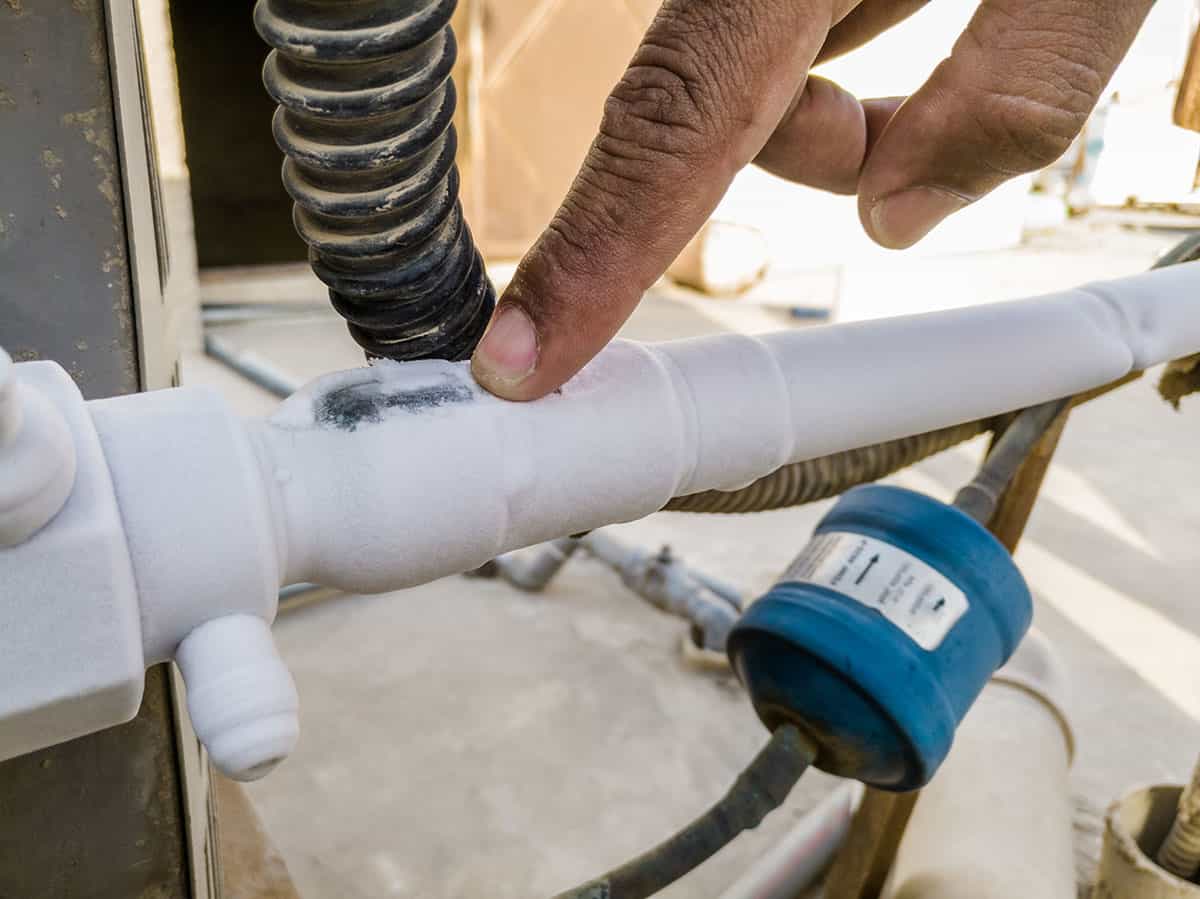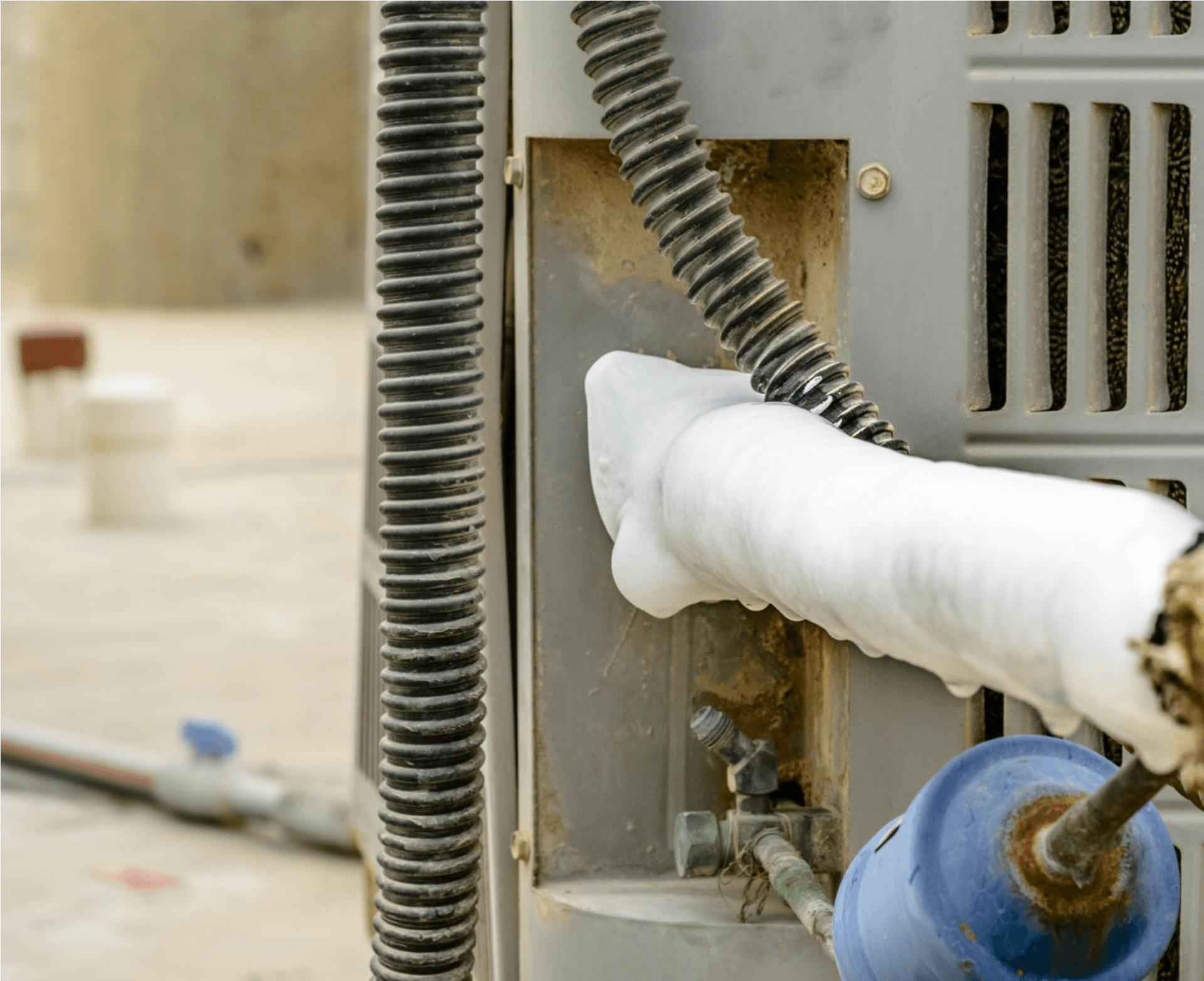Tips for Thawing a Frozen AC Pipe - Reinstating Normal Operation
Tips for Thawing a Frozen AC Pipe - Reinstating Normal Operation
Blog Article
Are you currently in search of answers about What Do I Do If My AC Pipe Is Frozen?

Intro
Finding that your a/c pipeline is iced up can be worrying, particularly throughout hot summer season when you depend on your a/c unit the most. Understanding what to do in such a situation is important to avoid further damages to your air conditioning system and ensure your comfort indoors.
Recognizing the Causes
Numerous aspects can add to the freezing of an air conditioner pipeline. Comprehending these causes can assist you address the concern successfully.
Absence of Airflow
One typical source of an icy air conditioning pipeline is inadequate air flow. When the air flow over the evaporator coil is restricted, it can trigger the coil to drop below freezing temperature level, leading to ice development on the pipe.
Reduced Refrigerant Levels
Not enough refrigerant levels in your AC system can also lead to a frozen pipeline. Low cooling agent levels can create the pressure in the system to go down, causing the freezing of wetness on the evaporator coil.
Cold Weather Conditions
In chillier climates, freezing temperature levels outside can add to the freezing of air conditioning pipelines. If your air conditioner system is not appropriately shielded or if there are leakages in the ductwork, chilly air can penetrate the system, causing the pipeline to ice up.
Dirty Air Filters
Unclean or clogged air filters can limit air movement in your a/c system, causing various problems, consisting of a frozen pipeline. It's important to replace or clean your air filterings system consistently to guarantee correct air movement and avoid ice accumulation.
Signs of a Frozen A/c Pipe
Recognizing the indications of a frozen a/c pipe is essential for timely action.
Lowered Airflow
If you discover a substantial decrease in air flow from your vents, it can indicate a frozen pipeline.
Ice Buildup on the Pipe
Visible ice accumulation on the refrigerant line or the evaporator coil is a clear indicator of an icy air conditioning pipeline.
Weird Sounds from the Unit
Uncommon sounds, such as hissing or bubbling, originating from your air conditioner device can signal that there's ice existing on the pipeline.
Immediate Actions to Take
When faced with a frozen air conditioner pipeline, it's necessary to act swiftly to prevent further damage to your air conditioning system.
Switching off the air conditioner
The initial step is to shut off your air conditioning unit to avoid the system from running and worsening the problem.
Looking for Blockages
Evaluate the area around the indoor system for any type of obstructions that may be blocking airflow, such as furniture or curtains.
Thawing the Pipe
You can use mild approaches like positioning towels taken in cozy water around the icy pipeline to assist thaw it slowly.
Preventive Measures
Taking preventive measures can help prevent future incidents of a frozen air conditioning pipe.
Regular Maintenance Checks
Schedule regular upkeep checks with a specialist HVAC professional to make certain that your air conditioner system is running successfully.
Transforming Air Filters
Consistently change or clean your air filters to avoid airflow restrictions and keep ideal performance.
Shielding Exposed Pipes
If your air conditioner pipelines are subjected to cold temperature levels, take into consideration protecting them to prevent cold throughout winter months.
Looking For Professional Help
If DIY techniques fail to resolve the concern or if you're not sure about just how to continue, it's best to look for support from a certified HVAC specialist.
When DIY Methods Fail
If your attempts to thaw the pipeline or address other concerns are not successful, it's time to contact a professional.
Significance of Hiring a Professional HVAC Technician
A licensed HVAC specialist has the expertise and devices necessary to diagnose and fix problems with your air conditioning system safely and properly.
Verdict
Taking care of a frozen AC pipe can be a frustrating experience, however knowing just how to respond can assist lessen damage and recover comfort to your home. By understanding the reasons, recognizing the indications, and taking timely activity, you can effectively address the problem and avoid future incidents.
G UP? HOW TO FIX IT?
It happens all over America. And the rest of the world probably. It’s the hottest day ever and for some darn reason your AC isn’t cooling the house. You fiddle with the thermostat to try and fix the problem. Nada. All you can do now is go outside and check the AC unit. You make your way there and find your air conditioner unit is frozen! But how?
In this post we’ll cover how you can tell that your air conditioner has frozen (other than the obvious reasons), what could have caused the freeze, and some of the things you can do about your AC freezing up. And if you have a frozen heat pump condenser, read our blog about it to learn what to do! But remember, it is always best to avoid your AC freezing up with an AC tune up. And if you are moving into a home, it's critical to get HVAC inspection so that you are aware of an AC problems before you move in.
Keep reading and you may be able to fix the frozen AC yourself. If you can’t, call an HVAC specialist. If you live in Maryland, call SuperTech HVAC for AC repair. We’ll take care of it.
How Does An Air Conditioning Unit Work?
How you probably imagine an AC works is wrong. Contrary to popular belief, an AC system does not inject cool air into a building. Instead, it removes the heat from inside and transfers it outside. Cool huh? (Pun intended).There are 4 major components among the 3 stations of an air conditioning system: the evaporator coil, the compressor, the condenser, and the refrigerant – a special chemical that links everything together through a closed loop system.
Station 1:
Warm indoor air is sucked into the return vent, through a filter, and blows over the evaporator coil. The heat is absorbed into the cold refrigerant, turning it from liquid to gas. The air, which is now cool, is blown back into the home to areas that your thermostat, i.e. you, has decided.
Station 2:
The refrigerant makes its way outside the house to the compressor, which squeezes the warm refrigerant, raising its gaseous temperature even more.
Station 3:
When the super hot vapor refrigerant reaches the condenser, the last step, the heat is expelled and absorbed into the outdoor air. The refrigerant instantly cools, which changes it from gas back to liquid form. The cold liquid refrigerant is now ready to return to station 1 and repeat the process.
Is Your AC Freezing Up? Here Are The Signs:
As you may have guessed, your air conditioner unit freezing up on a hot day is not normal.
If this happens, there's no need to panic. Often the issue can be solved with a little troubleshooting. If the AC unit is left frozen for too long however, you may find yourself with a bigger problem.
First things first, how do you know your AC is frozen?
Well, the obvious sign is the ice on your refrigerant line-set pipe. Simply check between your outdoor AC unit and your home's exterior wall to see whether your AC line frozen.
You might also have a frozen evaporator coil. This one's not as easy to check. You'll need to open a panel on the indoor unit to inspect. Don't do this unless you're handy. If you aren't, call an HVAC pro like SuperTech HVAC or you may damage something in the process.

As a serious reader about What Causes AC Pipes To Freeze?, I figured sharing that topic was really useful. Are you aware of another individual who is intrigued by Have a Frozen AC Line? Here’s How to Fix It? Be sure share it. I am grateful for your time. Visit us again soon.
Schedule A Service Call Report this page